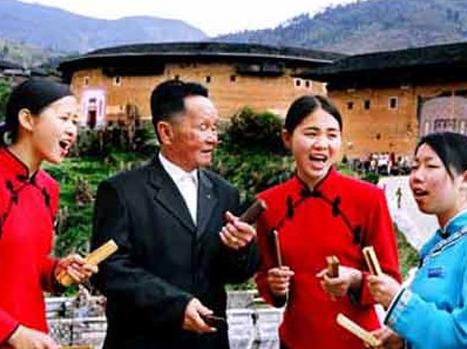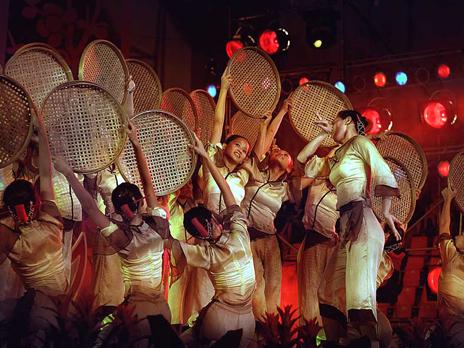
Hakka folk song is sung in its own dialect and it is the oral literature of the Hakkas, rich with Hakka dialect features and idyllic characteristics. It has become an independent branch of folk song.
Folk song is one kind of ballad. It is recorded in historical materials that the term "folk song" came into being in the Tang Dynasty and the "Folk Song Queen" Liu Sanjie's tale transmitted among people in Meizhou just took place in the Shenlong Period of the Tang Dynasty. From this, it is learnt that the Hakka folk song was prevalent at that time. The folk songs were influenced profoundly by Fifteen Country's Ballads in the Book of Songs compiled at the end of the Spring and Autumn Period. Later on, with the migration of the Hakkas, their folk song was then influenced by She's and Yao's ballads.

The Hakka folk song in Meizhou is mainly expressed by using the traditional techniques "Fu, Bi and Xing" as well as pun, overlapping and other techniques. It is basically in a "seven-character and four-sentence" style. The first, second and fourth sentences of each folk song rhyme. When singing, singers could make up their songs according to practical situation and deliver their feelings through different tones. Hakka folk song is melodious, and there are trills, glissandos, appoggiaturas and other embellishments everywhere, so its melody is sonorous, loud, lyric and pleasant. It has over 100 tones and its tones are high, long, stable and fluent. It is featured by rather high voice register, narrow diapason, multiple-grading up, few jumping up, free rhythm and multiple tempos. A song usually is mixed with different tempos.
Through ceaseless development, Hakka folk song becomes richer in both style and content. In all Hakka folk songs, love songs account for a great portion. They are the best and of greatest culture value. Apart from that, there are also "songs of labor, songs of exhortation, songs of all walks of life, songs of Cheng, songs of Xuxuan, songs of Langfan, songs of riddles, ditty, and bamboo melody", which cover all aspects of Hakka's life and reveal the social progress and people's pursuit of truth, goodness and beauty.





